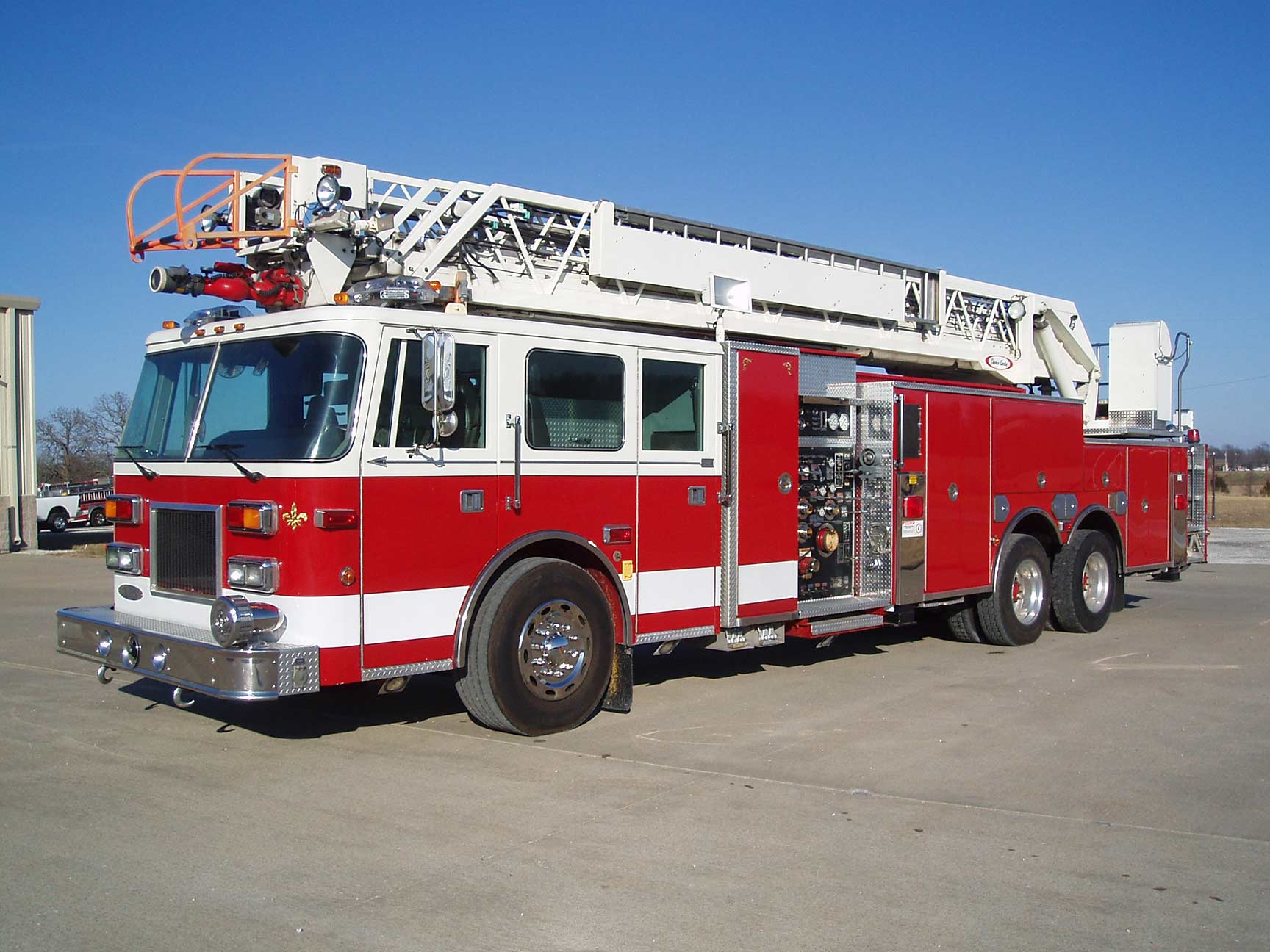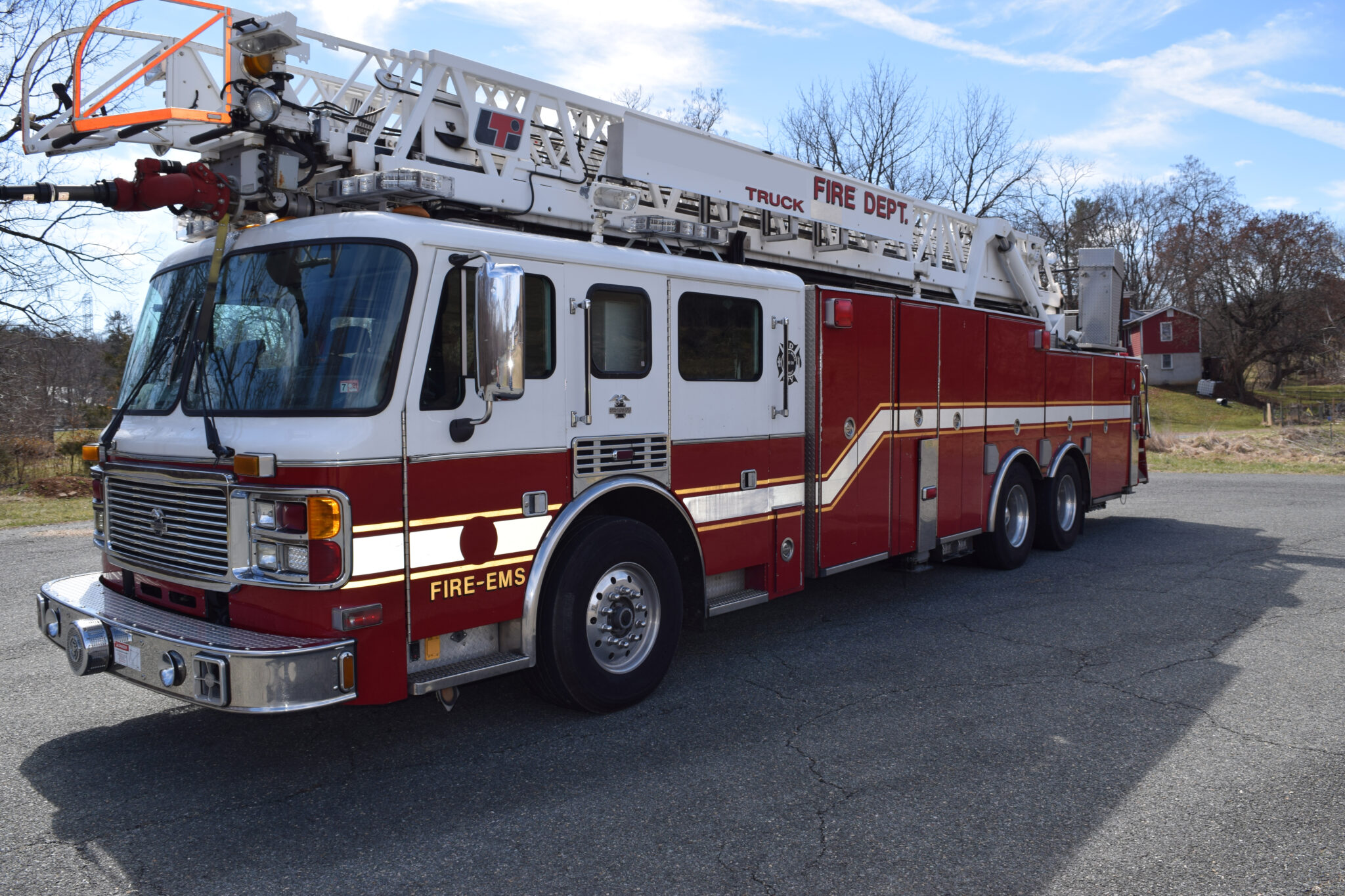Reaching New Heights on a Budget: The Dynamic Market for Used Aerial Fire Trucks
In the demanding world of emergency services, a fire department’s ability to reach elevated positions, deliver water streams from above, and perform high-angle rescues is paramount. Aerial fire apparatus – the iconic ladder trucks, quint apparatus, and aerial platforms – are the workhorses that provide this crucial capability. However, the cost of a new aerial truck can be staggering, often ranging from $1 million to upwards of $1.5 million, placing them out of reach for many smaller municipalities, volunteer fire departments, industrial brigades, and international agencies operating with constrained budgets.
This financial reality has fueled a robust and dynamic market for used aerial fire trucks. Far from being mere cast-offs, these pre-owned apparatus often represent an incredible value proposition, offering sophisticated capabilities at a fraction of the new cost. Navigating this market, however, requires a keen understanding of what to look for, what questions to ask, and how to assess the true value and remaining service life of these complex machines.
The Indispensable Role of Aerial Apparatus
Before delving into the specifics of the used market, it’s vital to appreciate why aerial apparatus are considered the linchpin of a modern fire service fleet:
- Elevated Water Delivery: Aerial master streams can deliver hundreds, even thousands, of gallons of water per minute from a high vantage point, suppressing fires from above or protecting exposures.
- Access and Ventilation: Ladders provide rapid access for firefighters to upper floors, roofs, and other elevated structures, facilitating search and rescue operations and vertical ventilation.
- Rescue Operations: From window rescues to high-angle rope operations, aerials are critical for extracting individuals from challenging situations.
- Lighting and Scene Support: Many aerials are equipped with powerful scene lights, generators, and even breathing air systems, turning them into mobile command and support units.
- Structural Stability Assessment: The elevated view allows incident commanders to assess structural integrity, fire spread, and potential collapse zones more effectively.
Given their multifaceted roles, the absence of an aerial apparatus can significantly hamper a department’s operational effectiveness. The used market steps in to bridge this gap, allowing departments to acquire these vital assets without bankrupting their budgets.
Types of Aerial Apparatus in the Used Market
The used market offers a variety of aerial configurations, each designed for specific operational needs:
-
Straight Aerial Ladder Truck: This is the classic ladder truck, primarily focused on providing an elevated ladder for access, rescue, and ventilation. While some may have small pumps for defensive operations or standpipes, their primary function is the ladder itself. They typically carry a vast array of ground ladders and specialized tools.
-
Quint Apparatus: The "quint" is a versatile "five-in-one" apparatus, combining the functions of a pump, water tank, hose bed, aerial device, and ground ladders. This makes it a highly efficient choice for departments needing to maximize their capabilities within a limited fleet or budget. Quints are popular in smaller communities or as primary response vehicles in larger departments.
-
Aerial Platform (Tower Ladder): These apparatus feature a basket or platform at the end of the aerial device, offering a safer and more stable working environment for firefighters. Platforms are ideal for prolonged operations at height, high-volume master streams, and complex rescue scenarios. They are often heavier and more expensive, even in the used market.
Why Buy Used? The Compelling Advantages
The decision to purchase a used aerial fire truck is often driven by several compelling advantages:
- Cost Savings: This is the most significant factor. A well-maintained used aerial can cost anywhere from $150,000 to $600,000, representing a massive saving compared to a new unit.
- Immediate Availability: New apparatus often have lead times of 18-36 months due to manufacturing backlogs. A used truck can be acquired and put into service much more quickly, addressing immediate operational needs.
- Proven Performance: Many used trucks have years of proven service under their belts, demonstrating their reliability and capabilities in real-world conditions.
- Less Depreciation: The steepest depreciation occurs in the first few years of a vehicle’s life. A used truck has already absorbed this initial depreciation, making it a more stable investment.
- Customization Potential: With budget savings, departments can allocate funds for refurbishments, upgrades, or customization to better suit their specific operational requirements.
Critical Considerations When Purchasing a Used Aerial
While the advantages are clear, buying a used aerial is a significant investment that demands meticulous due diligence. Here are the critical factors to evaluate:
-
Service History and Maintenance Records (The Gold Standard): This is arguably the single most important factor. Request a complete and detailed service history. Look for records of:
- Regular Preventative Maintenance (PMs): Oil changes, fluid checks, filter replacements.
- Annual Aerial Device Inspections: NFPA 1912 requires annual inspections, including visual, operational, and non-destructive testing (NDT) of critical components. Ensure these records are current and show no major issues.
- Pump Test Certifications (for Quints/Platforms): Annual pump tests verify the pump’s performance.
- Repairs and Replacements: Documented repairs indicate proactive maintenance. Unexplained gaps in records are red flags.
-
Age, Mileage, and Engine Hours:
- Age: While a 20-year-old aerial might still be operational, its remaining useful life might be limited. NFPA 1912 suggests 25 years as a typical service life, but many departments retire them earlier.
- Mileage: For a fire truck, engine hours are often more indicative of wear than mileage, especially for aerials that spend significant time idling or operating the aerial device. Look for both. High engine hours on a relatively low-mileage truck suggest extensive use of the pump or aerial.
-
Chassis and Powertrain Condition:
- Frame Integrity: Inspect the frame for rust, cracks, or signs of stress, particularly around mounting points for the aerial device.
- Engine: Check for leaks, unusual noises, or excessive smoke. Ask about recent engine work or rebuilds.
- Transmission: Smooth shifting is crucial. Inquire about transmission service history.
- Brakes, Tires, and Suspension: These are wear items, but their condition indicates overall maintenance. Worn tires or a spongy brake pedal are immediate concerns.
-
Aerial Device Specifics:
- Boom/Ladder Sections: Inspect every section for cracks, dents, corrosion, or signs of collision damage. Pay close attention to welds.
- Hydraulic System: Look for leaks around cylinders, hoses, and fittings. Check the hydraulic fluid level and condition. Listen for unusual noises during operation.
- Cables and Chains: Inspect for fraying, rust, or excessive wear.
- Turntable: Check for smooth rotation, excessive play, and proper lubrication.
- Waterway: If equipped, ensure the internal waterway is free of leaks and corrosion. Operate the master stream.
- Platform/Basket (if applicable): Inspect the integrity of the platform, railings, and controls. Ensure the leveling system works correctly.
- Outriggers/Stabilizers: Crucial for safe operation. Check for leaks, damage, and smooth extension/retraction.
-
Pump and Plumbing (for Quints/Platforms):
- Pump Performance: Request recent pump test results. If possible, conduct a new pump test during inspection.
- Plumbing: Inspect all piping, valves, and discharges for leaks, corrosion, or damage.
- Water Tank: Check for cracks, leaks, or internal corrosion.
-
Compartmentation and Storage:
- Assess whether the existing compartmentation meets your department’s equipment storage needs. Consider the cost and feasibility of modifying or adding compartments.
-
Electrical System and Lighting:
- Ensure all emergency lighting, scene lights, and interior compartment lights are functional. Check the generator (if present) for proper operation.
- Modern trucks often have complex multiplex electrical systems. Ensure there are no persistent fault codes.
-
Safety and Compliance Standards:
- NFPA 1912: This standard outlines requirements for the inspection, maintenance, testing, and refurbishment of in-service fire apparatus. Ensure the truck can meet these standards.
- Third-Party Inspection: Crucially, engage a qualified, independent third-party apparatus inspection company. They will perform a thorough visual, operational, and non-destructive test (NDT) of the aerial device, identifying hidden defects that a casual observer might miss. This is an indispensable investment.
-
Parts Availability and Serviceability:
- Older or less common models might have limited parts availability. Research the manufacturer and model year to ensure you can readily obtain replacement parts and find technicians capable of servicing the specific aerial device.
-
Training:
- Factor in the cost and time for operator training on the specific apparatus. Even experienced operators will need to familiarize themselves with a new (to them) truck’s nuances.
Where to Find Used Aerial Fire Trucks
The market for used aerials is diverse:
- Specialized Apparatus Dealers: Many dealerships focus exclusively on used fire apparatus. They often acquire trucks, perform necessary repairs or refurbishments, and offer warranties. This can be a more expensive but safer option.
- Online Marketplaces: Websites like Fire Apparatus & Equipment (FA&E), Command Fire Apparatus, Firetrucks Unlimited, and others list thousands of used apparatus for sale.
- Government Surplus Auctions: Websites like GovDeals, Public Surplus, and other municipal auction sites frequently list retired fire apparatus directly from departments. These can be excellent deals but often require "as-is, where-is" purchases with no warranties.
- Direct from Fire Departments: Some departments sell their apparatus directly. Networking at conferences or contacting larger departments can sometimes uncover opportunities.
- Brokerages: Firms that specialize in connecting buyers and sellers of fire apparatus.
The Buying Process: A Step-by-Step Approach
- Needs Assessment & Budget: Define your department’s specific operational needs (ladder vs. quint vs. platform, reach requirements, pump capacity) and establish a realistic budget, including potential refurbishment costs.
- Research & Shortlist: Identify potential trucks that meet your criteria using online resources and dealer contacts.
- Initial Contact & Information Gathering: Request detailed specifications, photos, videos, and most importantly, maintenance records and inspection reports.
- Preliminary Inspection: If the initial information is promising, conduct a preliminary visual inspection.
- Professional Third-Party Inspection & Testing: Do not skip this step. Engage a certified apparatus inspection company to conduct a thorough evaluation, including aerial load testing and NDT.
- Negotiation: Based on the inspection report and your budget, negotiate the price. Be prepared to walk away if the risks outweigh the benefits.
- Financing: Secure financing, if needed. Many lenders specialize in municipal equipment.
- Purchase & Delivery: Finalize the sale, arrange for transportation, and ensure all paperwork (title, bill of sale) is in order.
- Post-Purchase Refurbishment/Upgrades: Plan for any necessary repairs, preventative maintenance, or desired upgrades (e.g., LED lighting, new tires, interior refresh) before placing the truck in service.
Conclusion: A Strategic Investment
The market for used aerial fire trucks is a vital lifeline for departments seeking to enhance their capabilities without the crushing financial burden of a new acquisition. While it demands meticulous research, professional inspection, and a clear understanding of an apparatus’s history, the rewards can be substantial. A carefully selected and properly maintained used aerial can provide decades of reliable service, allowing firefighters to reach new heights in their mission to protect lives and property, proving that strategic budgeting can indeed lead to elevated operational excellence.
 Trucks for Sale Find the best deals on used trucks for sale across the USA. Browse pickups, semi trucks, dump trucks and more – updated daily
Trucks for Sale Find the best deals on used trucks for sale across the USA. Browse pickups, semi trucks, dump trucks and more – updated daily

